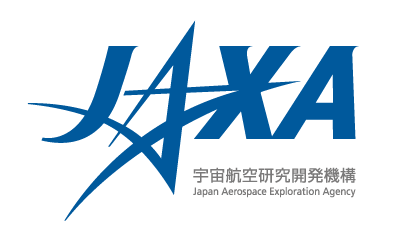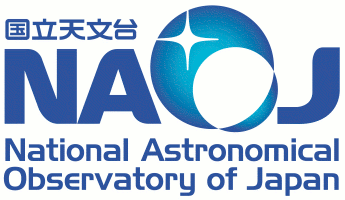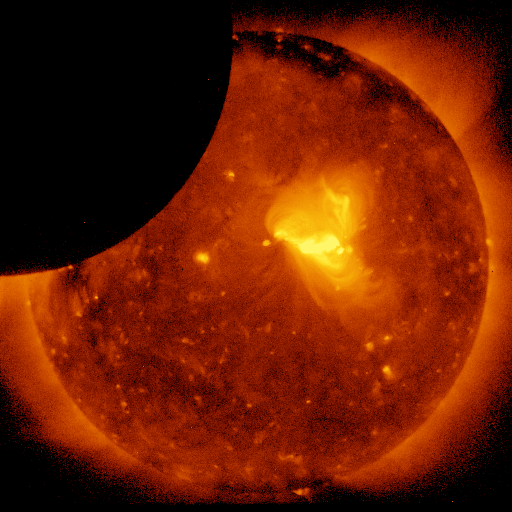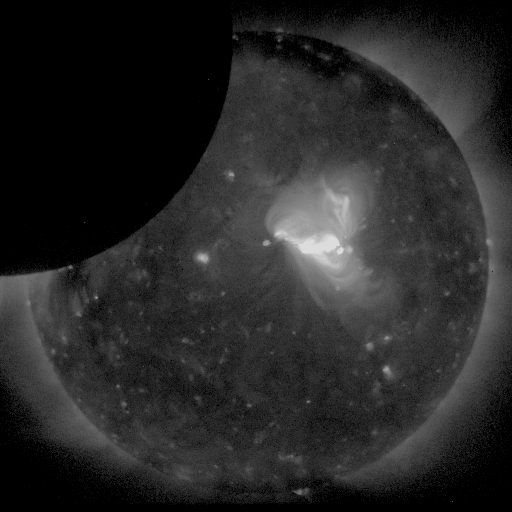Institute of Space and Astronautical Science / Japan Aerospace Exploration Agency (ISAS/JAXA)
National Astronomical Observatory of Japan (NAOJ)
National Aeronautics and Space Administration (NASA)
The Japan Aerospace Exploration Agency (JAXA), the National Astronomical Observatory of Japan (NAOJ/NINS), and the US National Aeronautics and Space Administration (NASA), release partial eclipse images and videos taken on August 22 (JST) with the solar observation satellite "Hinode".
The images and videos were taken on August 22, 2017 at 1:57 JST with the X-Ray Telescope (XRT) aboard “Hinode” during its flight above the Pacific Ocean (off the west coast of the US) at an altitude of 680km. The silhouette of the new moon was approaching from the south west (the lower right side of the image) and passing across the solar disk toward the north east (the upper left side of the image) against the solar corona seen in X-rays. It was a partial eclipse, the maximum magnitude of which was 0.714. Since the flight speed of "Hinode" was very fast (27,000 km per hour), the duration of the partial eclipse was only about 15 minutes.
The total eclipse is a precious opportunity to deepen our understanding of the Sun. “Hinode” jointly observed the eclipse with ground observers. The scientific target of observation was to see the coronal structure in the polar region and the mechanism of jets which are frequently created there. Moreover, during the 90 minutes when the zone of totality crosses the continent of USA, “Hinode” took a series of X-ray coronal images collaborating on the project to produce the video of white light corona participated by many citizens (Eclipse Megamovie 2017, https://eclipsemega.movie). Electron densities can be measured by comparing the X-ray images and the white light images taken during the total eclipse. We would get a clue to understand the mechanism of polar jet creation and the dynamics of the coronal structure taking place in these 90 minutes. We hope the success of the eclipse observations will lead to more precise prediction of solar flare and solar storm occurrences that result to the geomagnetic storms, sometimes affecting electronic devices in the artificial satellites and on the ground.
The X-ray solar images and videos can be downloaded from below.
Solar eclipse captured by "Hinode"
- The solar eclipse videos taken with the X-Ray Telescope
Format: MPEG4(H.264), image size: 512x512
File size: about 2MB each. The response may become slow in case of many accesses at the same time. - The solar eclipse images taken with the X-Ray Telescope
Left: the images with color, right: black and white images
Click to enlarge.
- BMP-format image files for the videos
Zip-compressed files including the BMP images which were used to make the videos. The size of each image is 512x512. The last 6 digits number in the name of each bmp file gives Universal Time when the image was taken. Time intervals may not be equal because of telemetry drop-off. The images in these files are original and no higher resolution versions are available.








